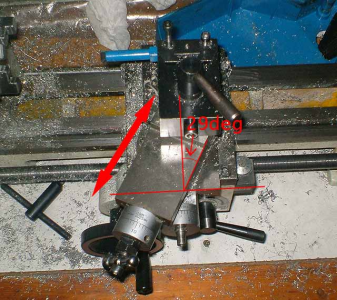- Joined
- Mar 25, 2013
- Messages
- 4,652
So external threads are easy to set the compound. You want just a half degree or so short of 30 deg.
What about internal threads when you are feeding the compound in reverse? Do you use the same compound setting or do you need to move it 1 degree the other way?
Obviously all of this is for feeding with the compound. If you use the cross slide it is not an issue but I get cleaner threads feeding the compound.
Robert
What about internal threads when you are feeding the compound in reverse? Do you use the same compound setting or do you need to move it 1 degree the other way?
Obviously all of this is for feeding with the compound. If you use the cross slide it is not an issue but I get cleaner threads feeding the compound.
Robert
Last edited:


